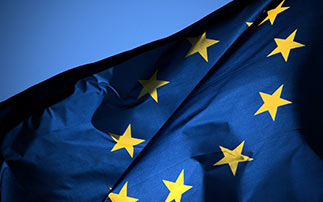The LIFE programme is the EU’s funding instrument for environment and climate action.
Welcomeurope invites applicants to read the following useful suggestions which highlight some of the key elements of LIFE, and of some of its components, in order to help applicants identify the most suitable potential source of funding for their project proposals.
1 – It is not Horizon 2020
It is important to distinguish LIFE and the Horizon 2020 programme.
Applicants should know that Horizon 2020 involves Research and Innovation actions which have a strong research component and are more focused on pilot projects, prototypes, demonstration and market replication.
On the other hand the LIFE programme can also support
– Demonstration and Pilot projects
– Best Practice projects
– Information, awareness and dissemination projects
In addition to the ‘traditional’ projects mentioned above, the LIFE programme supports capacity building for Member States, technical assistance for preparation of integrated projects in specific pre-identified topic areas which feed directly into policy developments. Anyway, note that the common aspect of these project types is that research activities must be strictly limited
2 – It is not the EU Structural and Cohesion Funds
The Cohesion Policy is also an important source of financial support for environmental protection investments, in particular for direct support to water supply and treatment, waste management, nature protection, air quality and eco-innovation.
However, applicants should be aware that the application process is very different. It is important to note that a specific action may not be co-financed at the same time by both sources of EU finance.
3 – Distinguish the sub-programmes
Sub-programmes for Environment
– LIFE Nature and Biodiversity Priority area, this sub-programme is linked to the objectives of the Birds and Habitats Directives, or to the EU Biodiversity Strategy 2020
Typical actions: nature conservation, conservation of endangered habitats and/or species, biodiversity
– LIFE Environment and Resource Efficiency Priority area, this sub-programme is linked to a range of environmental policy and legislation, including with respect to the link between the environment and health, and in support of the Roadmap to a Resource Efficient Europe. Typical actions are linked to solving the environmental problem tackled.
Sub-programme for Climate Action
– LIFE Climate Change Mitigation and LIFE Climate Change Adaptation Priority areas
These priority areas work towards a low carbon and climate resilient economy in the EU, underpinning the implementation of the 2020 climate and energy package and the EU strategy on adaptation to climate change.
Typical actions: green-house gas emissions reductions, addressing the impacts of climate change
4 – LIFE Integrated projects VS LIFE “traditional” projects
Traditional projects
-They target one or several thematic priorities
-They have a one stage application
-The project period is 1 to 5 years
-The types of projects are pilot, demonstration, best practice or information, awareness and dissemination projects
On the other hand, integrated projects
-They are re limited to 4 specific areas of intervention: Nature, Air, Waste and Water
-They have a 2 stages application
-The project period is 6 years or more
-The types of projects are a combination of elements of traditional project types and they should include mainly best practice elements
5 – Don’t forget the deadlines!
The 2016 LIFE Call is provisionally planned to be published during the second half of May. An indicative timetable for the call and its deadlines is available here.
>>>Go further…LIFE Programme




